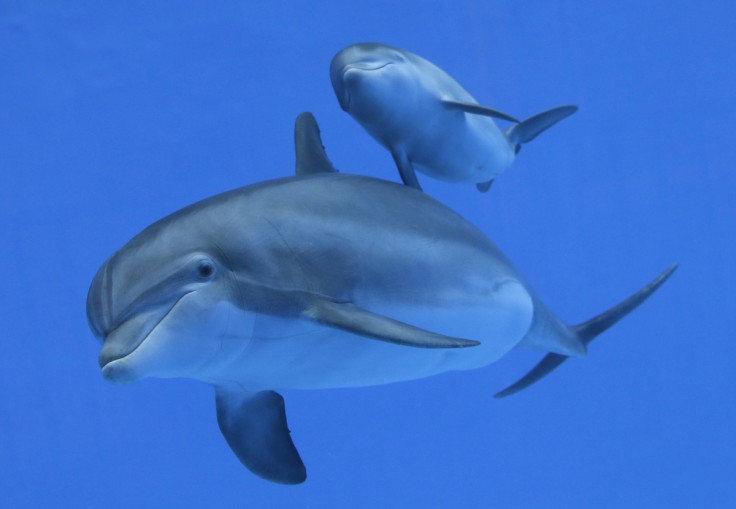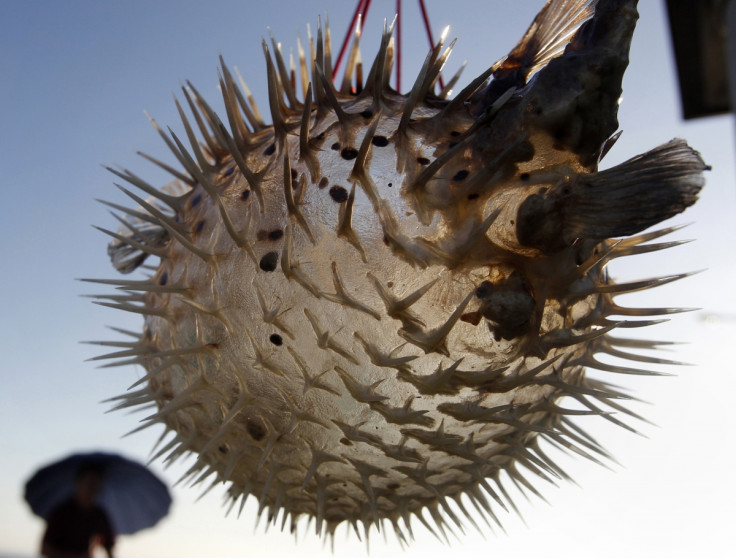Dolphins Get High on a Diet of Toxic Fish [VIDEO]

Dolphins have developed a taste for puffer fish, whose bodies secrete a narcotic that produces a trance-like 'high'.
Using remote-controlled cameras camouflaged as fake turtles and squid, the makers of Dolphins: Spy in the Pod, a new documentary, watched as male bottlenose dolphins entered a trance-like state after snacking on puffer fish and attaining a 'high' from the toxin released by the fish.
"This was a case of young dolphins purposely experimenting with something we know to be intoxicating... After chewing the puffer gently and passing it round, they began acting most peculiarly, hanging around with their noses at the surface as if fascinated by their own reflection," said executive producer of the film, John Downer.
"It reminded us of that craze a few years ago when people started licking toads to get a buzz, especially the way they hung there in a daze afterwards. It was the most extraordinary thing to see."
Video of the dolphins nibbling the puffer fish will be broadcast in the second episode of the BBC One series, narrated by David Tennant, which starts on Thursday 2 January 2014.

The puffer fish is packed with the deadly neurotoxin tetrodotoxin. A delicacy in Japan, when prepared correctly, the minute traces of the toxin give the effect of tingly lips and light-headedness. However, if the sushi chef doesn't prepare it properly, the tetrodotoxin is a muscle paralyser, with no known cure. The victim becomes unable to breathe and slowly asphyxiates.
During research for the film Dolphins: Spy in the Pod, cameramen made more than 1,500 dives, collecting 900 hours of raw footage of the unusual behaviour of dolphins around the world including South Africa, Argentina and Mozambique – the location for the scenes with the puffer fish.
A robotic dolphin was created by the documentary makers to get up close and personal to the sea mammals. By this method, scientists were able to delve into the dolphins' hitherto unexplored habits.
Spycams disguised as sea creatures such as Tunacam, Turtlecam, Squidcam and Dolphincam helped to record behaviour never seen before, including dolphins forming alliances with stingrays and other fish to hunt in packs together for food.
"The spy creatures were designed to infiltrate the dolphins' hidden lives by looking like the marine creatures a dolphin might encounter in their everyday lives," explained Downer.
Watch Spyturtle cam in Dolphins: Spy in the Pod
© Copyright IBTimes 2025. All rights reserved.






















